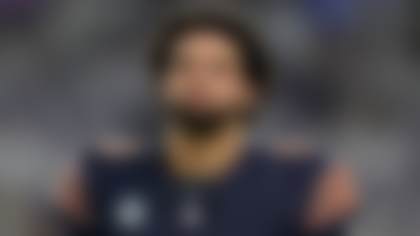On the eve of the Super Bowl each year, the Pro Football Hall of Fame's selection committee meets in a conference room to choose that year's class. The list of modern-era candidates starts with 15 finalists before being trimmed to 10 and then five.
After the final votes are cast -- and before the class is announced -- a Hall official typically provides the names of prominent candidates who will be eligible for the first time the following year. Last February, that announcement (and the room reactions) went something like this:
"Champ Bailey ..."
Heads nod.
"Tony Gonzalez ..."
Heads nod.
"Ed Reed ..."
Heads shake.
The final reaction was affirmation that choosing the Class of 2019 is going to be incredibly challenging, because there are so many deserving candidates but only five available slots. Bailey, Gonzalez and Reed all are worthy, but so are a dozen-plus others, including the 10 who did not make the cut last February -- three of whom are interior offensive linemen.
That's notable because I fear those guys could comprise the next group that fails to get the love it deserves. Most recently, it was safeties. From Kenny Houston's induction in 1986 to Brian Dawkins' enshrinement Saturday, no modern-era player who began and ended his career at that position was voted into the Hall. That's a 32-year gap.
Before safeties, it was kickers: Jan Stenerud was inducted in 1991, but another pure kicker did not follow him until Morten Andersen last year, ending a 26-year drought. Ray Guy remains the only pure punter, and he had to wait 23 years to hear his name called.
My concern stems from the fact that the numbers being put up by skill-position players are almost impossible to ignore. If we aren't blinded by them in highlights, we are bombarded with them from fantasy football. That figures to continue as the league tinkers with rules to open up passing games and protect defenseless receivers. It's also easier for us to quantify tackles and sacks and receptions and touchdowns than identify the intricacies of interior play on the offensive line.
For the sake of discussion, though, let's talk numbers associated with the three interior linemen who were Hall of Fame finalists last February but did not make the cut:
-- Steve Hutchinson, a mauling guard with the Seahawks, Vikings and Titans, blocked for a 1,000-yard rusher in 10 consecutive seasons and 11 of 12 overall. He was a five-time first-team All-Pro, a seven-time Pro Bowler and a member of the All-Decade Team of the 2000s.
-- Kevin Mawae, an athletic center who played for the Seahawks, Jets and Titans, blocked for a 1,000-yard rusher in 13 of his 16 seasons -- including 2009, when Chris Johnson ran for 2,006 yards, and 2004, when Curtis Martin led the league with 1,697. He was a three-time first-team All-Pro, an eight-time Pro Bowler and a member of the All-Decade Team of the 2000s.
-- Alan Faneca, a dominant guard who played for the Steelers, Jets and Cardinals, blocked for a 1,000-yard rusher in nine of his 13 seasons, went to nine consecutive Pro Bowls and was voted first-team All-Pro six times. He also was named to the All-Decade Team of the 2000s.
That's three interior linemen who are among the best to ever do it, who cleared a path for others who either are in Canton or will be there one day, but who have yet to find a spot themselves. In fact, only one interior offensive lineman has received a bust in Canton over the past five seasons, and Will Shields had to wait four years to be enshrined, despite going to 12 straight Pro Bowls, starting 223 of 224 games and participating on some of the more prolific offenses in league history.
My point is not to take anything away from those at the skill positions. It is to question what makes their accomplishments more impressive -- and more deserving of induction -- than those of the men who pave the way or provide the protection for them to succeed.
Follow Jim Trotter on Twitter at _@JimTrotterNFL_












